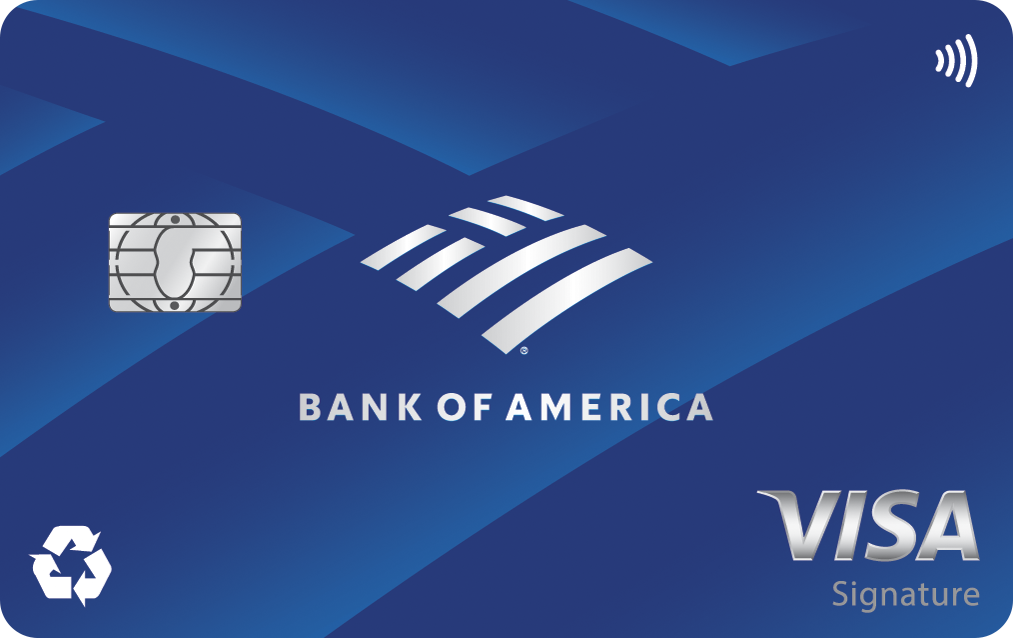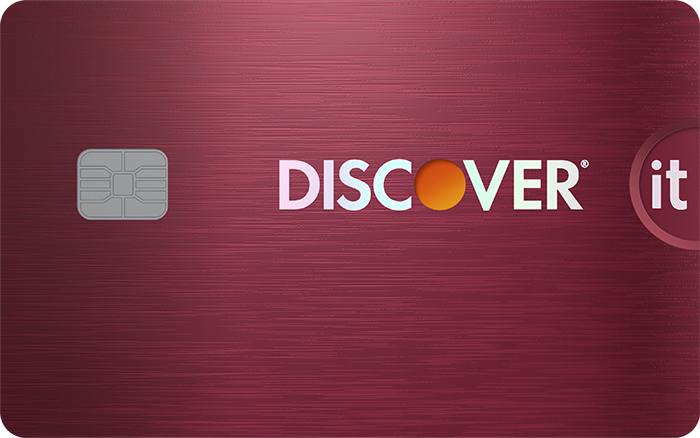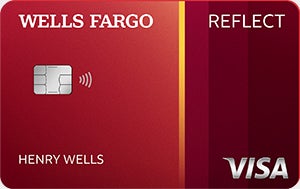If you've ever heard a friend brag about booking a flight on points (it's me, I'm the friend), you may have wondered how the heck you can actually get stuff with points. I've had a Chase Sapphire Preferred® Card (see rates and fees) for years, and I won't shut up about the trips I've taken for pennies on the dollar -- because once you figure out how credit card points work, it kind of feels like a cheat code.
Credit card points can unlock a ton of value: free travel, cash back, even luxury upgrades. But figuring out how they actually work -- how to earn them, how much they're worth, and how to redeem them smartly -- isn't always intuitive. I've been using points for years, and I still learn new tricks all the time.
Whether you're just getting started or trying to make better use of the points you already have, I'll walk you through the basics of how credit card points work and how to get the most out of them.
First, what are credit card points?
Credit card points are a type of rewards currency you earn by using certain rewards credit cards. Unlike cash back cards that give you a set percentage back, points offer more flexibility -- and sometimes more value -- if you know how to use them.
Most points can be redeemed for:
- Travel (flights, hotels, rental cars)
- Cash back or statement credits
- Gift cards
- Online shopping or dining
- Experiences or exclusive perks
Think of it like a loyalty program for your wallet. The more you use your card (responsibly), the more points you rack up, and the more value you can squeeze from everyday spending.
Credit card comparison
We recommend comparing options to ensure the card you're selecting is the best fit for you. To make your search easier, here's a short list of standout credit cards.
| Offer | Our Rating | Welcome Offer | Rewards Program | APR | Learn More |
|---|---|---|---|---|---|
|
5.00/5
Our ratings are based on a 5 star scale.
5 stars equals Best.
4 stars equals Excellent.
3 stars equals Good.
2 stars equals Fair.
1 star equals Poor.
We want your money to work harder for you. Which is why our ratings are biased toward offers that deliver versatility while cutting out-of-pocket costs.
|
Discover will match all the cash back you’ve earned at the end of your first year. INTRO OFFER: Unlimited Cashback Match for all new cardmembers–only from Discover. Discover will automatically match all the cash back you’ve earned at the end of your first year! There’s no minimum spending or maximum rewards. You could turn $150 cash back into $300. | 1% - 5% Cashback Earn 5% cash back on everyday purchases at different places you shop each quarter like grocery stores, restaurants, gas stations, and more, up to the quarterly maximum when you activate. Plus, earn unlimited 1% cash back on all other purchases. |
Intro: Purchases: 0%, 15 months Balance Transfers: 0%, 15 months Regular: 17.99% - 26.99% Variable APR |
||
|
5.00/5
Our ratings are based on a 5 star scale.
5 stars equals Best.
4 stars equals Excellent.
3 stars equals Good.
2 stars equals Fair.
1 star equals Poor.
We want your money to work harder for you. Which is why our ratings are biased toward offers that deliver versatility while cutting out-of-pocket costs.
|
N/A | N/A |
Intro: 0% intro APR for 21 months from account opening on purchases and qualifying balance transfers Purchases: 0% intro APR on purchases for 21 months from account opening Balance Transfers: 0% intro APR for 21 months from account opening on qualifying balance transfers Regular: 16.99%, 23.49%, or 28.74% Variable APR |
||

Apply Now for Bank of America® Travel Rewards credit card
On Bank of America's Secure Website. |
4.70/5
Our ratings are based on a 5 star scale.
5 stars equals Best.
4 stars equals Excellent.
3 stars equals Good.
2 stars equals Fair.
1 star equals Poor.
We want your money to work harder for you. Which is why our ratings are biased toward offers that deliver versatility while cutting out-of-pocket costs.
|
25,000 points (worth $250) 25,000 online bonus points after you make at least $1,000 in purchases in the first 90 days of account opening - that can be a $250 statement credit toward travel purchases | 1.5-3 points per dollar Earn unlimited 1.5 points per $1 spent on all purchases, with no annual fee and no foreign transaction fees, and your points don't expire as long as your account remains open. Earn 3 points per $1 spent on travel purchases booked through the Bank of America Travel Center. |
Intro: 0% Intro APR for 15 billing cycles for purchases, and for any balance transfers made in the first 60 days. After the Intro APR offer ends, a Variable APR that’s currently 17.99% - 27.99% will apply. A 3% Intro balance transfer fee will apply for the first 60 days your account is open. After the Intro balance transfer fee offer ends, the fee for future balance transfers is 4%. Balance transfers may not be used to pay any account provided by Bank of America. Purchases: 0% Intro APR for 15 billing cycles for purchases Balance Transfers: 0% Intro APR for 15 billing cycles for any balance transfers made in the first 60 days Regular: 17.99% - 27.99% (Variable) |
Apply Now for Bank of America® Travel Rewards credit card
On Bank of America's Secure Website. |
At Motley Fool Money, every credit card we review is rated on a 5-star scale, scored to a tenth of a point. Our ratings weigh the features that matter most: rewards rates, 0% intro APR offers, welcome bonuses, fees, and perks like travel credits and purchase protections.
We score cards within four primary categories:
- 0% intro APR cards for paying down balances or financing purchases
- Travel cards for maximizing points, miles, and perks on the road
- Cash back and rewards cards for everyday spending value
- Business cards designed to fit company expenses and growth
Top-rated cards typically combine strong long-term value, attainable bonuses, low fees, and standout protections or perks.
We combine these factors with an evaluation of brand reputation and customer satisfaction to ensure you're getting the best credit card recommendations. Our aim is to maintain a balanced best-of list featuring top-scoring credit cards from reputable brands. 'Best for' category selections on this page are determined by our editors, and a single card may be recognized in multiple categories.
Ordering within lists is influenced by advertiser compensation, including featured placements at the top of a given list, but our product recommendations are NEVER influenced by advertisers. Learn more about how Motley Fool Money rates credit cards.
At Motley Fool Money, every credit card we review is rated on a 5-star scale, scored to a tenth of a point. Our ratings weigh the features that matter most: rewards rates, 0% intro APR offers, welcome bonuses, fees, and perks like travel credits and purchase protections.
We score cards within four primary categories:
- 0% intro APR cards for paying down balances or financing purchases
- Travel cards for maximizing points, miles, and perks on the road
- Cash back and rewards cards for everyday spending value
- Business cards designed to fit company expenses and growth
Top-rated cards typically combine strong long-term value, attainable bonuses, low fees, and standout protections or perks.
We combine these factors with an evaluation of brand reputation and customer satisfaction to ensure you're getting the best credit card recommendations. Our aim is to maintain a balanced best-of list featuring top-scoring credit cards from reputable brands. 'Best for' category selections on this page are determined by our editors, and a single card may be recognized in multiple categories.
Ordering within lists is influenced by advertiser compensation, including featured placements at the top of a given list, but our product recommendations are NEVER influenced by advertisers. Learn more about how Motley Fool Money rates credit cards.
How do you earn points?
You'll usually earn points based on how much you spend -- and how you spend.
For example, a card might offer:
- 3 points per dollar on dining
- 2 points per dollar on travel
- 1 point per dollar on everything else
So, if you spend $100 at a restaurant, you'd earn 300 points. Spend $500 on groceries with a card that offers 1 point per dollar, that's 500 points.
Many cards also offer welcome bonuses, which are usually a chunk of points if you meet a minimum spending threshold within the first few months. This is often the fastest way to build a big stash of points early on.
How much are points worth?
It depends. Some cards give you a flat value (like $0.01 per point), while others offer more value if you redeem through specific travel portals or transfer your points to a partner program like an airline or hotel chain.
Here's a general range:
- Cash back or statement credit: usually around $0.01 per point
- Travel booked through your card's portal: often $0.01 to $0.015 per point
- Transfer to travel partners: potentially $0.02 per point or more, depending on the deal
So, while 10,000 points might equal $100 in cash back, they could get you $125-$200 in travel depending on how you book.
I often transfer my Chase Ultimate Rewards points to airline partners like United or Southwest and book flights that would've cost $300+ for a fraction of that in points. It's one of the best ways to squeeze extra value out of the system.
Think the Chase Sapphire Preferred® Card might be a fit for your wallet? Learn more about it here.
How do you redeem points?
Every credit card issuer has a different portal or platform, but most redemptions follow a similar process:
- Log into your account and find the rewards or points section.
- Choose your redemption category: travel, cash back, gift cards, etc.
- Decide how many points you want to use -- either to fully cover a purchase or to offset part of it.
If your card lets you transfer points to travel partners (like airline frequent flyer programs or hotel loyalty programs), that's usually done through the issuer's website as well.
Pro tip: Using points to shop at retailers or cover purchases at checkout (like on Amazon) can be convenient, but you'll usually get less value per point. Booking travel or transferring to partners usually stretches your points much further.
Keep reading: How to Travel for Free with Credit Card Points
Can credit card points expire?
Some do, some don't.
For many major issuers, your points won't expire as long as your account is open and in good standing. But if you miss payments or close your card, you could lose them.
Always check the fine print. If you're thinking about closing a card, redeem or transfer your points first to avoid losing them.
Tips for making the most of your points
Here's what I've learned after years of playing the points game (and making plenty of rookie mistakes along the way):
Don't hoard your points
Redemption options change. Programs get devalued. If you've got a good use for your points now, take it. (Also: You deserve a vacation.)
Use the right card in the right place
Match your spending to your card's bonus categories. Use your dining rewards card at restaurants. Use your travel rewards card when booking flights. It takes zero extra effort and can double or triple the points you earn.
Know your transfer partners
Transferring points to airlines or hotels can unlock incredible deals -- like international flights, business class upgrades, or luxury hotels for far fewer points than you'd expect. It takes a little extra research, but the payoff is often worth it.
Don't waste points on low-value redemptions
Gift cards and checkout options may look appealing, but they usually give you the lowest return per point. Stick to travel or cash back unless you really need the flexibility.
Always pay your balance in full
Points are great, but they're not worth it if you're paying interest. If you carry a balance month to month, you'll cancel out any rewards you earn.
Bottom line
Credit card points can be an incredible tool -- not just for the occasional flight or hotel, but for building more flexibility into your finances. And the best part? You're earning them on money you're already spending.
You don't need a dozen cards or a spreadsheet full of transfer charts to make it worth your while. Just pick a solid rewards card, use it wisely, and start turning your everyday spending into something more meaningful -- whether that's a trip, a splurge, or just a little extra room in your budget.
Ready to find the right card for you? Check out our list of the best rewards credit cards to see which ones offer the most value for your lifestyle.
FAQs
-
Credit card points are a type of rewards currency earned when you spend with certain credit cards. You can redeem them for travel, cash back, and more.
-
The best value often comes from transferring points to airline or hotel partners or booking travel through your card's portal. Avoid low-value redemptions like gift cards or shopping credits when possible.
-
It depends on the issuer. Many points won't expire as long as your account stays open and in good standing -- but you could lose them if you cancel your card or miss payments.
-
Yes! Even if you don't travel, you can still redeem points for cash back or statement credits. That said, travel redemptions often give you more bang for your points.
The Motley Fool owns shares of and recommends Visa.

